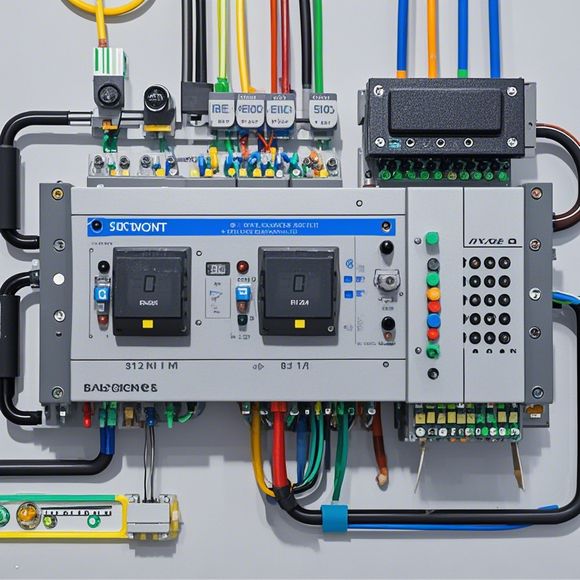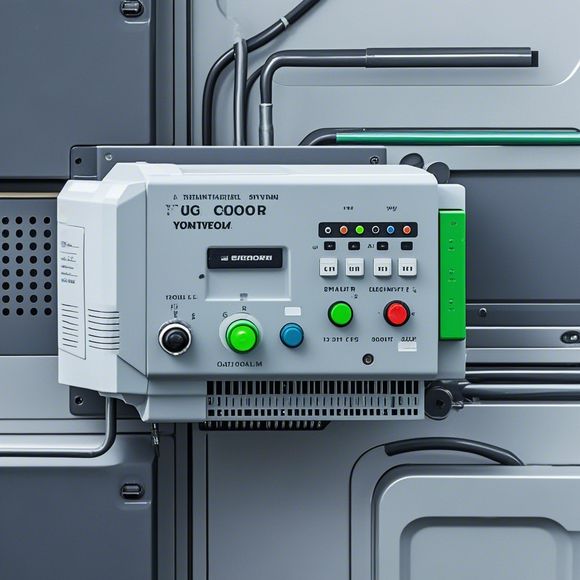PLC (Programmable Logic Controller)
Introduction:

Hello everyone, today I am going to talk about a very important topic for us as a group of international trade professionals. Today we're going to delve into the world of Programmable Logic Controllers, commonly known as PLCs. These are devices that are responsible for controlling and monitoring various industrial processes. They are designed to operate automatically, making them essential in manufacturing, automation, and control systems.
Now let's start with their basic functions:
1、Input Operation: PLCs have input ports which can be used to connect sensors or other devices, allowing them to collect data from the environment. This data is then processed and interpreted by the controller to make decisions based on the information received. For example, if the temperature sensor detects an increase in temperature, the PLC could activate a cooling system to keep the temperature within safe limits.
2、Control Operation: Once the data has been processed, the PLC can take action based on its pre-programmed logic. This may involve turning on or off certain components, adjusting settings, or even triggering alarms when necessary. The level of control can vary greatly, depending on the complexity and requirements of the process being monitored. For instance, a PLC could be used to control a conveyor belt, ensuring it moves at a consistent speed and stops at designated points.
3、Output Operation: After taking action based on the input, the PLC sends out commands to the actuators that it controls, such as motors or valves. These actuators then perform the actions required, like moving parts, opening or closing valves, or changing settings on machines. For example, if the output of a pump needs to be adjusted based on the pressure levels detected by the PLC, the actuators will follow the instructions provided by the controller to ensure proper functioning of the pump.
4、Automation and Integration: PLCs are not limited to individual tasks; they can also be integrated into larger systems to create more complex automation networks. By using communication protocols such as PROFIBUS or Ethernet, PLCs can communicate with each other and other devices in the system, creating a seamless and efficient workflow. For example, a PLC might be connected to a computer system that monitors and records data on a production line. The PLC could then receive this data and adjust the parameters in real-time to optimize the performance of the production process.

5、Robustness and Reliability: One of the most critical features of PLCs is their reliability and robustness. They are designed to withstand extreme conditions and operate continuously without fail. Additionally, PLCs can be configured to handle multiple inputs and outputs simultaneously, making them ideal for complex systems that require precise control. For instance, a PLC could be used in a factory setting where multiple machines need to operate together efficiently. The controller can monitor the status of each machine and adjust the settings based on real-time data to ensure optimal performance.
6、Customization and Customization: While PLCs come with built-in functionality, they can also be customized to meet specific needs of the user. This can involve adding new input or output ports, modifying existing ones, or even integrating additional features such as memory modules or networking capabilities. For example, a manufacturer might want to add a temperature sensor to monitor the temperature of a product during storage. With a customizable PLC, the manufacturer can easily integrate this sensor into the system, allowing for real-time monitoring and control of temperatures.
7、Cost Efficiency: Compared to other types of automation equipment, PLCs offer significant cost savings. They are designed to be affordable and reliable, making them an attractive option for businesses looking to streamline their operations and improve productivity without breaking the bank. For instance, a small business might choose to install a simple PLC system instead of investing in a more complex and expensive automation solution. This could result in significant cost savings over time, allowing the company to invest in other areas of growth.
8、Future Proof: As technology continues to advance, PLCs remain an essential component of modern automation systems. They are designed to be compatible with newer technologies and software platforms, ensuring longevity and relevance in the industry. For example, many modern PLCs now come with built-in support for cloud-based applications, making them accessible from anywhere with an internet connection. Additionally, they often include advanced features such as machine learning capabilities that can help optimize performance and reduce downtime.
9、Education and Training: To effectively utilize PLCs, it is important for users to have the knowledge and skills necessary to troubleshoot and maintain these systems. Many manufacturers offer training programs or online resources that can help users understand how to use their PLCs effectively. Additionally, there are numerous certification programs available that provide comprehensive training in PLC programming and maintenance. These programs can provide valuable insights into the latest techniques and best practices for working with PLCs.
10、Maintenance and Support: Just like any other piece of equipment, PLCs require regular maintenance and support to ensure they continue to function properly and efficiently. Many manufacturers offer extended warranties and technical support services that cover routine maintenance and repairs. Additionally, there are online forums and communities dedicated to sharing information and advice about PLCs and their associated technologies. These resources can provide valuable insights into maintaining and troubleshooting common issues that arise with PLCs.

11、Comparative Analysis: When comparing PLCs to other types of automation equipment, several factors should be considered. For example, some industries may prefer simpler solutions with fewer inputs and outputs while others may require more sophisticated control systems with greater flexibility and customization options. Additionally, some PLCs may be more cost-effective than others due to their lower price point and ease of use. It is important for businesses to carefully weigh these factors before making their decision.
12、Case Studies: There are many success stories involving PLCs in different industries. For example, a manufacturing plant might use PLCs to automate their production lines, reducing downtimes and increasing overall efficiency. In another case study, a healthcare facility might use PLCs to manage patient care schedules and monitor vital signs in real-time. These examples demonstrate just how versatile and powerful PLCs can be in different applications.
13、Economic Benefits: Finally, one of the key reasons for implementing PLCs is the potential economic benefits they can bring to businesses. By automating processes and reducing downtime, businesses can save money on labor costs, reduce energy consumption, and improve overall profitability. Additionally, by investing in PLCs early on, businesses can set up a foundation for future expansion and growth opportunities.
In conclusion, PLCs are incredibly powerful tools that can revolutionize the way we operate in today's fast-paced world. From simple industrial processes to complex manufacturing facilities, PLCs play an essential role in ensuring everything runs smoothly and efficiently. As we explore the world of Programmable Logic Controllers, we should keep in mind their capabilities, advantages, and limitations. By understanding these aspects, we can make informed decisions about which PLCs best fit our particular needs and goals. Thank you for listening!
Content expansion reading:
Articles related to the knowledge points of this article:
How to Use a PLC Controller for Your Business
PLC (Programmable Logic Controller) Control System Basics
The Role of Programmable Logic Controllers (PLCs) in Foreign Trade Operations
Connecting a PLC Controller to Your Computer
PLC Controllers: A Comprehensive Guide to Understanding Their Prices